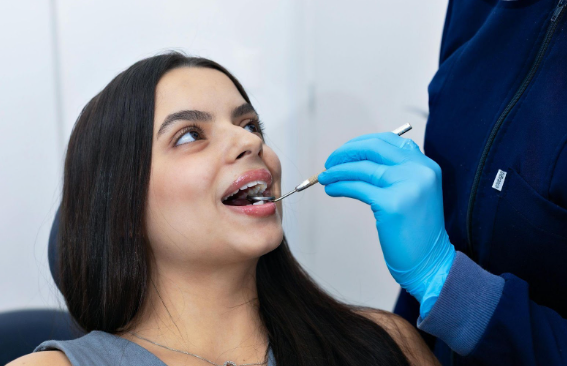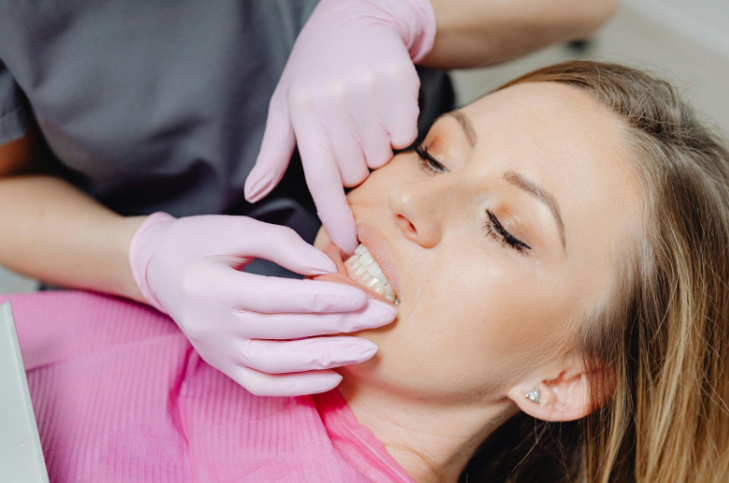What is a Tooth Abscess?
What is a Tooth Abscess?

Did you know that experiencing persistent tooth pain often conceals a deeper issue—a tooth abscess? This occurs when a bacterial infection establishes a pocket of pus beneath the tooth, causing throbbing pain. These abscesses can develop in different parts of the tooth, including the soft tissue inside (the pulp), the root, and the gums.
Understanding Tooth Anatomy and Abscess Formation
Let's make sense of what a tooth abscess is by exploring the layers of a tooth and how these pesky things show up. A tooth isn't just a hard thing in your mouth used to chew food; it's got a few parts we should know about. There's the tough outside part called enamel, the softer inside part known as dentin, a core in the middle called pulp where nerves and blood vessels hang out, and finally, there's the root that keeps the tooth snug in your jawbone.
Imagine this: Tiny bacteria sneak into the pulp through a little crack or chip or when a tooth isn't doing well. Once these bacteria get inside, they start causing trouble. To fight back, your body sends in some white blood cells. This whole defense thing causes
swelling, and that's when an abscess starts forming.
Types of Tooth Abscesses
There are two main types of tooth abscesses:
- Periapical Abscess: This one sets up camp at the tip of your tooth root. It's like a party that starts in a pulp and decides to spread around.
- Periodontal Abscess: This type prefers to hang out in your gums, especially if serious gum disease (periodontitis) occurs. It's like a gathering in the neighborhood of your tooth.
Recognizing Symptoms of a Tooth Abscess
The symptoms of a tooth abscess can vary based on the location and severity of the infection. But some common signs include:
- Big, Lasting Toothache: If your tooth hurts a lot and won't quit, especially when biting or chewing, that's a clue.
- Feeling Extra Sensitive: If your tooth reacts to hot or cold stuff more than usual, it could be shouting about an abscess.
- Gums Acting Up: If the gums around a tooth get all puffy, red, and tender, they might be trying to tell you something.
- Face Puffing Up: If your face gets a bit swollen, especially around the tooth, causing trouble, that's another sign.
- Breath Not So Fresh: Bad breath can come with a tooth abscess—it's like a not-so-pleasant side effect telling everyone something is wrong.
- Running a Fever: Feeling all warm and feverish? It could be your body trying to fight off an infection.
- Trouble Swallowing: If swallowing is tricky, the abscess may be causing the discomfort.
Understanding the Causes of a Tooth Abscess
Several factors can contribute to the development of a tooth abscess, including:
- Tooth decay: When tiny bacteria in your mouth snack on your tooth's tough enamel and dentin, they create little paths for more bacteria to sneak into the pulp.
- Trauma: If you chip, crack, or break a tooth, that's like opening a door for bacteria to stroll in.
- Gum disease: When your gums get sick (periodontitis), they can say goodbye to some tissue, giving bacteria a direct line to your tooth's root.
- Improper dental hygiene: If you're not a big fan of brushing and flossing, that's a party invitation for plaque and bacteria on your teeth, upping the chances of getting an infection.
- Dry mouth: Saliva is like a superhero that fights off acids and clears out bacteria. If you're running low on saliva, you become more vulnerable to tooth infections.
Diagnosing and Treating a Tooth Abscess
When you suspect a tooth abscess, it's time for a dental checkup. Here's how the dentist figures out what's going on and what they can do to help:
Step 1: The Checkup
First, the dentist takes a good look at the tooth causing the fuss and the nearby gums. They might also snap X-rays to see how far the infection has gone. This part helps them understand the whole picture.
Step 2: Quick Action is Key
It's time for action once they know what they're dealing with. Quick treatment is important to stop the infection from spreading and causing more problems.
Step 3: Treatment Options
Here's where the dentist decides the best way to tackle the issue. Treatment options usually include:
- Drainage and Irrigation: This involves making a small cut to let out the pus. Sometimes, they clean the area with a solution to cut out any remaining bacteria.
- Root Canal Therapy: If the infection has caused serious damage to the pulp, a root canal might be on the table. This procedure removes the infected pulp, cleans up the root canal, and seals it to keep things in check.
- Antibiotics: These will help your body kick out the rest of the infection.
- Pain Medication: To make you feel better while your body and the treatment team work together to sort things out.
Preventing Tooth Abscesses
If you want to steer clear of tooth abscesses, remember these easy tips:
- Keep it Clean:
- Brush your teeth at least twice a day.
- Floss at least once a day.
- Keeping your teeth clean will keep plaque and bacteria at bay—the troublemakers behind abscesses.
- Check-in with your Dentist:
- Visit your dentist every six months.
- They'll clean your teeth and check for any early signs of problems.
- Catching issues early is like stopping trouble at its starting line.
- Don't Wait on Cavities:
- Don't wait around if you feel a toothache or see a cavity.
- Get to your dentist pronto.
- Quick treatment stops the infection from getting worse.
- Kick the Smoking Habit:
- Smoking is a big no-no if you want healthy gums and teeth.
- It boosts the chances of gum disease and other dental issues.
- Say no to smoking for a happier smile and overall health.
- Drink Up for a Happy Mouth:
- Keep your mouth moist by drinking lots of water.
- Water helps wash away acids and keeps things balanced.
- So, sip water throughout the day for a hydrated and healthy smile.
A tooth abscess is a painful and serious infection that requires immediate attention. If you suspect you have a tooth abscess,
schedule an appointment with our dentist at
Patriot Family Dental for timely diagnosis and treatment. We are committed to preventing problems and ensuring a pain-free, happy smile.











